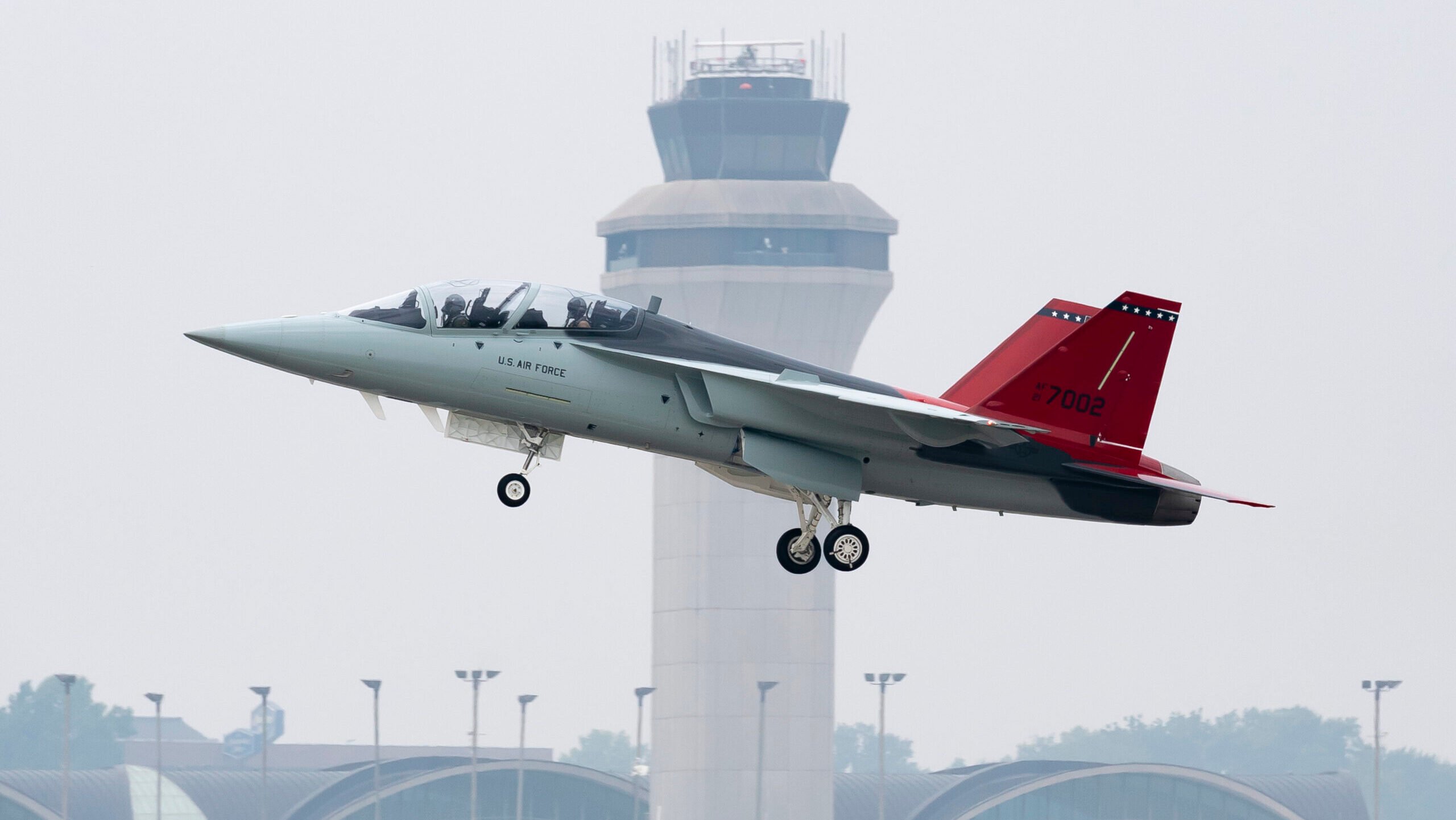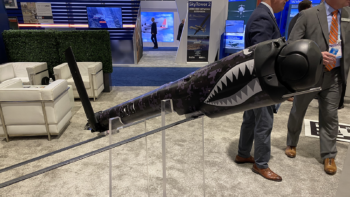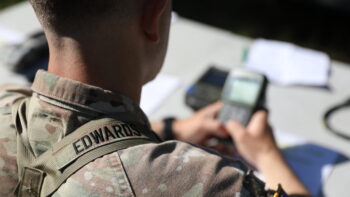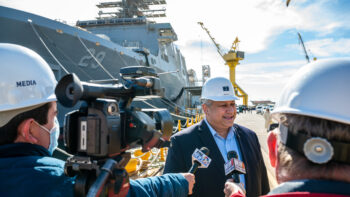
A T-7A Red Hawk trainer aircraft from the 416th flight test squadron, takes off from St Louis Lambert International Airport (Boeing)
MADRID and WASHINGTON — A US Air Force official has revealed the service is actively considering a new, armed variant of the Boeing T-7A Red Hawk, dubbed F-7, which could potentially replace older F-16 fighter jets.
A request for information (RFI) will be prepared to outline necessary requirements to industry, the official told Breaking Defense at the International Fighter Conference in Madrid, under the Chatham House Rule, adding that USAF has “not talked” to Boeing about developing the aircraft.
The decision to move out with a RFI implies that USAF wants to include the views of other contractors capable of weapons integration and additional technologies. The T-7 was built with an open architecture and digital design, which lend themselves to such development and industry collaboration.
The official declined to further elaborate on plans but Boeing has previously said the T-7, a trainer aircraft, could be retrofitted with missiles or bombs to replace Northrop Grumman F-5 and Dassault/Dornier Alpha Jet platforms, according to Flight Global. A fleet of F-7s could help USAF maintain its shrinking fighter force structure as it seeks to offload aging weapon systems: while not as advanced as an F-35, an F-7 conceptually would provide roughly the same capability as a fourth-generation fighter.
Though the official at the conference said the Air Force had not talked to Boeing about developing a fighter variant of the T-7, a Boeing official told Breaking Defense the company and the service have discussed the T-7’s future.
“Dialogue, conversations and brainstorming going on right now [with the US Air Force] are about T-7 next-generation training,” said the Boeing official, who spoke on the condition of anonymity. “We’ve been very sensitive to focus on our first customer, so we are purposely delaying future discussion” of a F-7 or light attack jet type of concept.
The official added, “We don’t want to drive bad perceptions internally with the Air Force, as we talk about all the great stuff that [the Red Hawk] is going to do in the future. Job number one is getting this jet to them because they really need it.”
In a company statement issued today a Boeing spokesperson said, “We have always envisioned growth for the T-7 aircraft and believe it’s an excellent candidate to fulfill many roles in the future, but right now we are focused on delivering the T-7A Red Hawk to the USAF as quickly and safely as possible.”
Development issues relating to the T-7’s ejection seat have forced an over two-year delay on the program, though the Air Force has stated that no further significant changes are expected to be made by Boeing before a Milestone C low-rate production decision takes place in 2025. The manufacturer has lost over $1.1 billion on the troubled effort, which covers delivery of 351 aircraft, 46 ground based training systems and related equipment.
A first of five T-7A Engineering, Manufacturing and Development (EMD) aircraft was accepted by the USAF in September. Two contractor owned jets have also completed over 500 flight hours. The program has recorded 9000 data points, added the Boeing official.
The trainer was originally designed using digital tools, simulation modeling and advanced manufacturing techniques to succeed the T-38C Talon.
The USAF has said that acquisition of the Red Hawk will allow pilots to focus on a wide range of technologies including data links, simulated radars, smart weapons and defensive management systems.
Industry has often turned training aircraft into light fighters, such as South Korea’s FA-50, developed off the T-50 supersonic trainer, and Britain’s Hawk.
Lockheed, Howmet settle lawsuit over F-35 titanium (EXCLUSIVE)
Lockheed Martin alleged in court filings that Howmet cut off the supply of titanium after the aerospace giant refused to agree to higher prices, threatening production of the F-35.



























